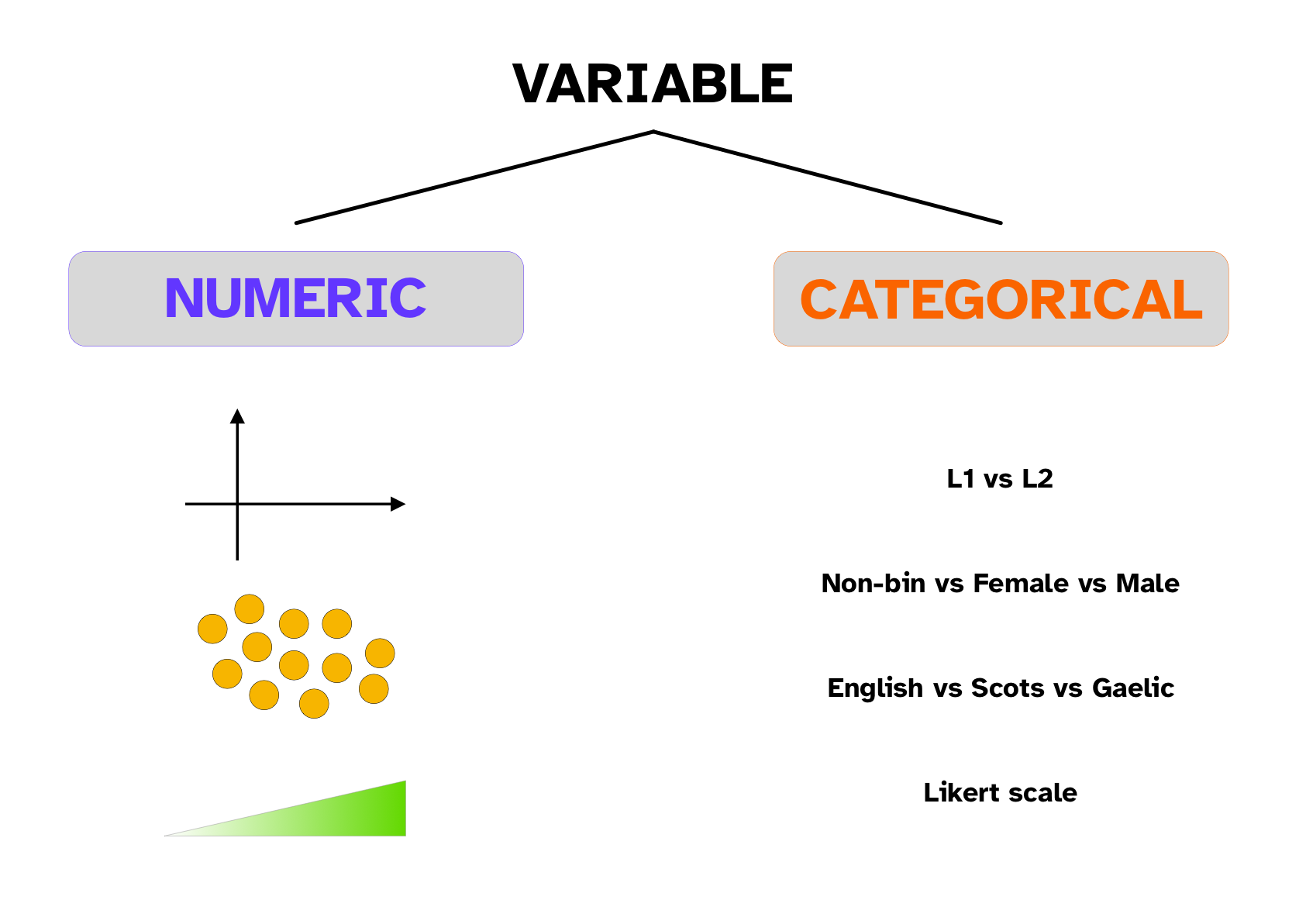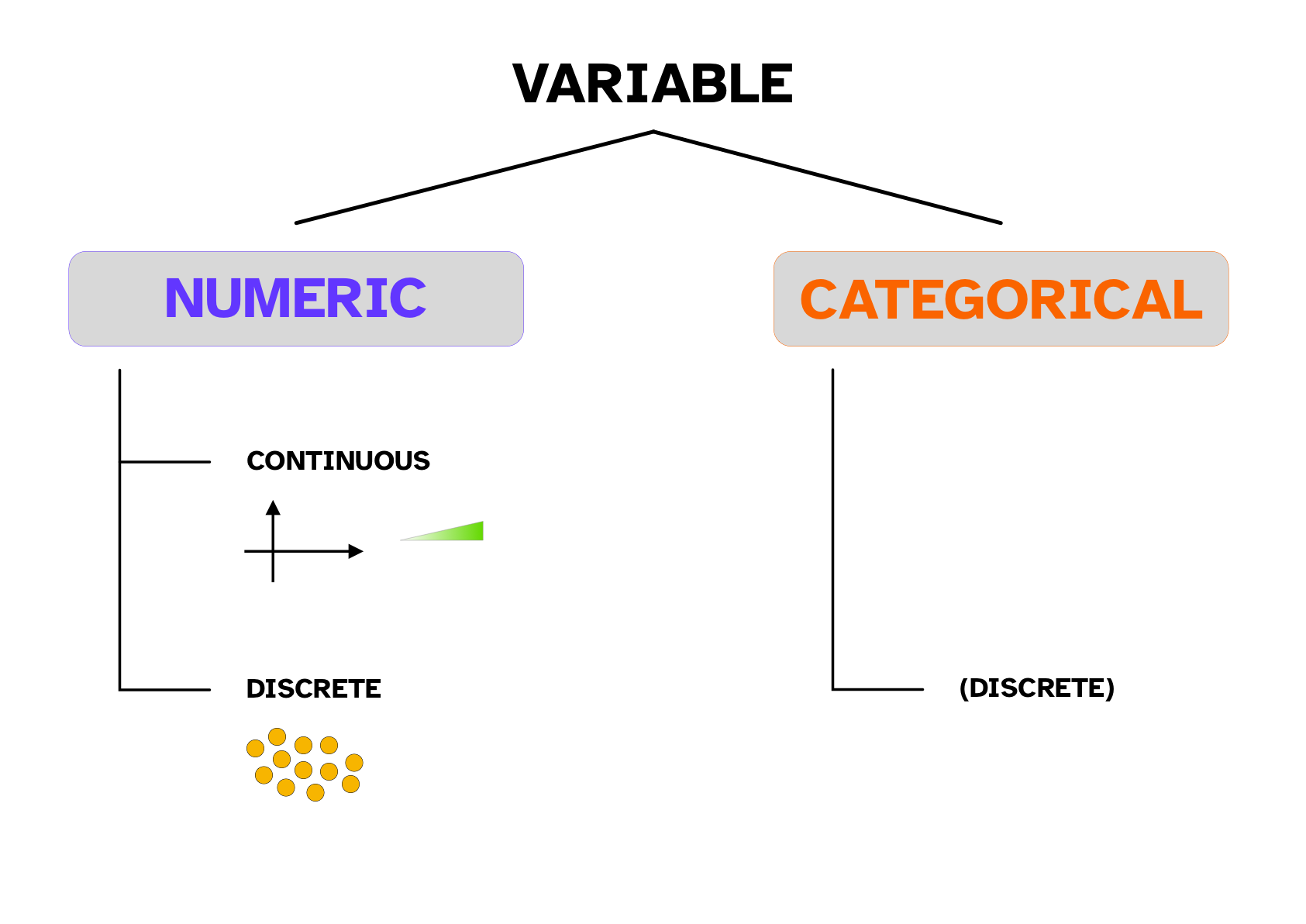Statistical variables
1 Statistical variables
A (statistical) variable is any characteristics, number, or quantity that can be measured or counted.
- When you observe or measure something, you are taking note of the values generated by the variable.
- It’s called variable because it varies (ha!).
- The opposite of a variable is a constant.
Some examples:
- Token number of telic verbs and atelic verbs in written Sanskrit.
- Voice Onset Time of stops in Mapudungun.
- Friendliness ratings of synthetic speech.
- …
Try and think of more!
2 Types of variables
You will find that some statistics textbooks overcomplicate things when it come to types of variables. From an applied statistics perspective you only need to be able to identify numeric vs categorical variables and continuous vs discrete variables.
2.1 Numeric vs categorical variables

This distinction is quite self-explanatory:
Numeric variables are variables that are numbers.
Categorical variables are variables that correspond to categories, groups or levels on a scale.
Learning how to recognise variables is a fundamental skill in quantitative data analysis, since the type of variables determines the type of analyses you can carry out.
2.2 Continuous vs discrete variables

Orthogonal to the numeric/categorical distinction, there is the continuous vs discrete distinction.
This one can be at times less straightforward.
A continuous variable is a variable that can take on any value between any two numbers.
A discrete variable is a variable that can only take on a set of values, and no value in between.
Numeric variables can be either be continuous or discrete, while categorical variables can only be discrete.
3 Operationalisation
The action of operationalisation consists in choosing how to measure something: as a numeric or as a categorical variable.
In some cases, the choice is obvious, but in most cases something could be operationalised either way and it will be a matter of study design that helps you choose.
For example, age can be operationalised as years (numeric) or as age groups, like young vs old (categorical).
Think of ways to operationalise the following variables:
- Voice Onset Time.
- Friendliness of speech.
- Lexical frequency.